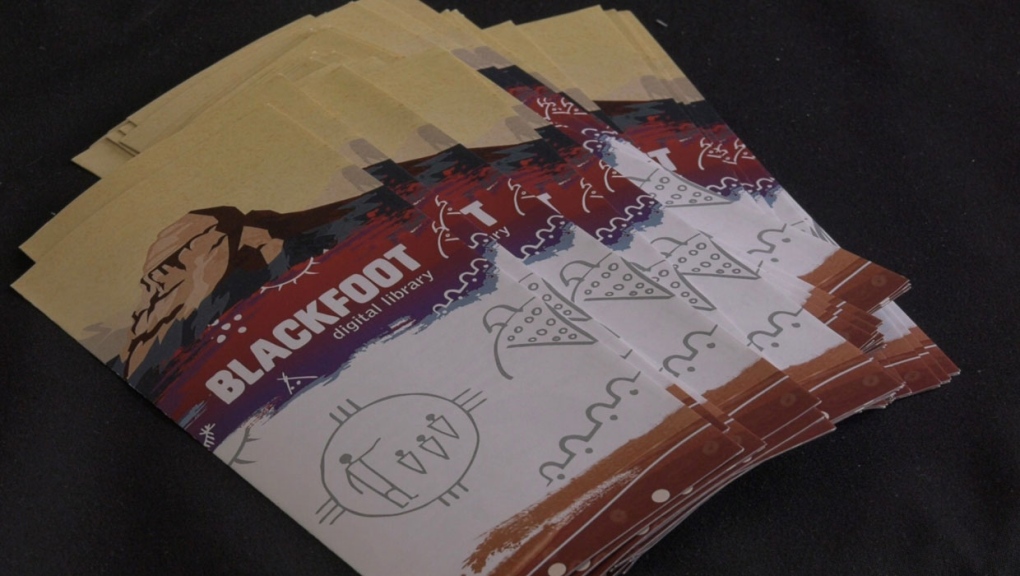U of L develops new website connecting historical Blackfoot artifacts in British museums to people
 Through the online database, users can explore hundreds of historical Blackfoot artifacts.
Through the online database, users can explore hundreds of historical Blackfoot artifacts.
It took three years of research, filming and designing, but now the University of Lethbridge, three British museums and researchers from the U.K. along with Blackfoot elders have launched the Mootookakio’ssin website.
It's a place where anyone in the world can learn about Blackfoot artifacts and stories.
“Some of the research, we’ve tried to put a story behind what has been collected because it did belong to somebody and it did mean something,” said Jerry Potts, a Blackfoot elder who worked on the project.
“Some of these items were from the first contact the Blackfeet had with settlers. The material we are looking at was developed before there was any trade, so they were made with quill work and natural dyes,” added Potts.
Melissa Shouting, a member of Kainai Nation and a graduate student in the Faculty of Health Sciences, says part of the process was to travel to Britain to document and photograph the historical items.
“One of the reasons I said yes to going there was because we weren’t just going to look at the items and keep that knowledge to ourselves, we were going there to eventually create this website that really illustrates who we are, and then deliver it back to our community,”
The new Blackfoot Digital Library creates links to non ceremonial objects. It involved Christine Clark, a new media professor at the U of L, and her students, who created 3D images of each object as a way to reconnect the items with the Blackfoot culture.
“In recognizing the lack of access to the material during a time where there’s a process of knowledge renewal, we felt like creating a greater level of access to that material and as well as detailed images of them,” said Clark.
Students working on the project say it's another way of bringing awareness to truth and reconciliation.
“It’s a very important step in the right direction. These items more or less belong here so, to be able to at least bring them closer is very valuable,” said Calvin Lloyd, a research assistant and recent U of L grad.
Some of the artifacts featured on the website date back to the 1700s. Shouting says Blackfoot artists can now use the website to see the historical items to guide their own artistic practices.
“It just feels amazing to be able to show people and invite them into world and teach people a little bit, but also allow artisans to use the website so that they can create items as well.”

It’s also another way to teach Blackfoot youth and non-Indigenous people about the culture and its resilience.
Mootookakio’ssin translates to “distant awareness.”
There is a Blackfoot committee consisting of elders and consultants that focuses on repatriation of historical artifacts. Because the ones shown on the website are non-ceremonial, elders say they are happy to leave them in the British museums.
You can check out the website here.
CTVNews.ca Top Stories

Second Cup closes Montreal franchise over hateful incident
Second Cup Café has closed one of its franchise locations in Montreal following allegations of hateful remarks and gestures made by the franchisee in a video that was widely circulated online during a pro-Palestinian protest on Thursday.
‘It’s pretty emotional:’ N.B. family escape fire, plan to rebuild home
A family in Riverview, N.B., is making plans for Christmas and the future after escaping a fire in their home on November, 14.
'Still working full time on it:' One year later police continue to search for gunman in Caledon double murder linked to ex-Olympian
One year after a couple was shot and killed in their Caledon home in what investigators have described as a case of mistaken identity, Ontario Provincial Police say they are still trying to figure out who pulled the trigger.
Scurvy resurgence highlights issues of food insecurity in Canada's rural and remote areas
A disease often thought to only affect 18th century sailors is reemerging in Canada.
A man called 911 for help during a home invasion. Las Vegas police fatally shot him
A Las Vegas man called for police help during a home invasion before an officer fatally shot him, according to authorities and 911 calls.
These royal residences are opening their doors this Christmas
Not so long ago, if you wanted to spend Christmas with the royal family, the only way to get close was to press your nose up to the TV screen during the monarch’s Christmas speech.
Cat caught in hunting snare rescued by BC SPCA
Donations are ramping up for a BC SPCA cat with a mangled paw after being caught in a hunting snare, one of a rising number of pets to fall prey to the hunting device.
Jannik Sinner leads Italy past the Netherlands for its second consecutive Davis Cup
Jannik Sinner clinched Italy’s second consecutive Davis Cup title and capped his breakthrough season by beating Netherlands' Tallon Griekspoor.
Lotto Max jackpot hits $80M for second time ever
The Lotto Max jackpot has climbed to $80 million for just the second time in Canadian lottery history.































